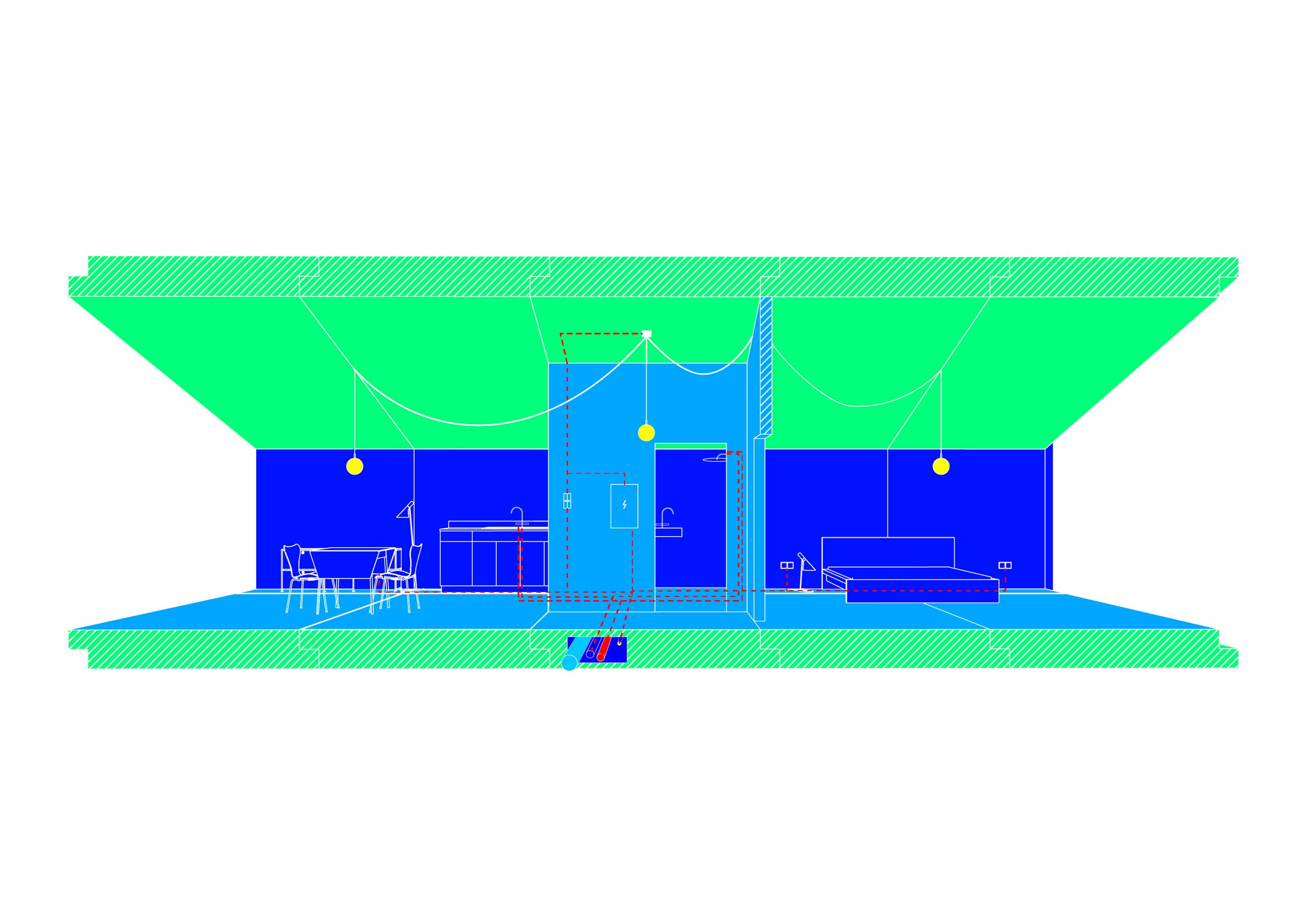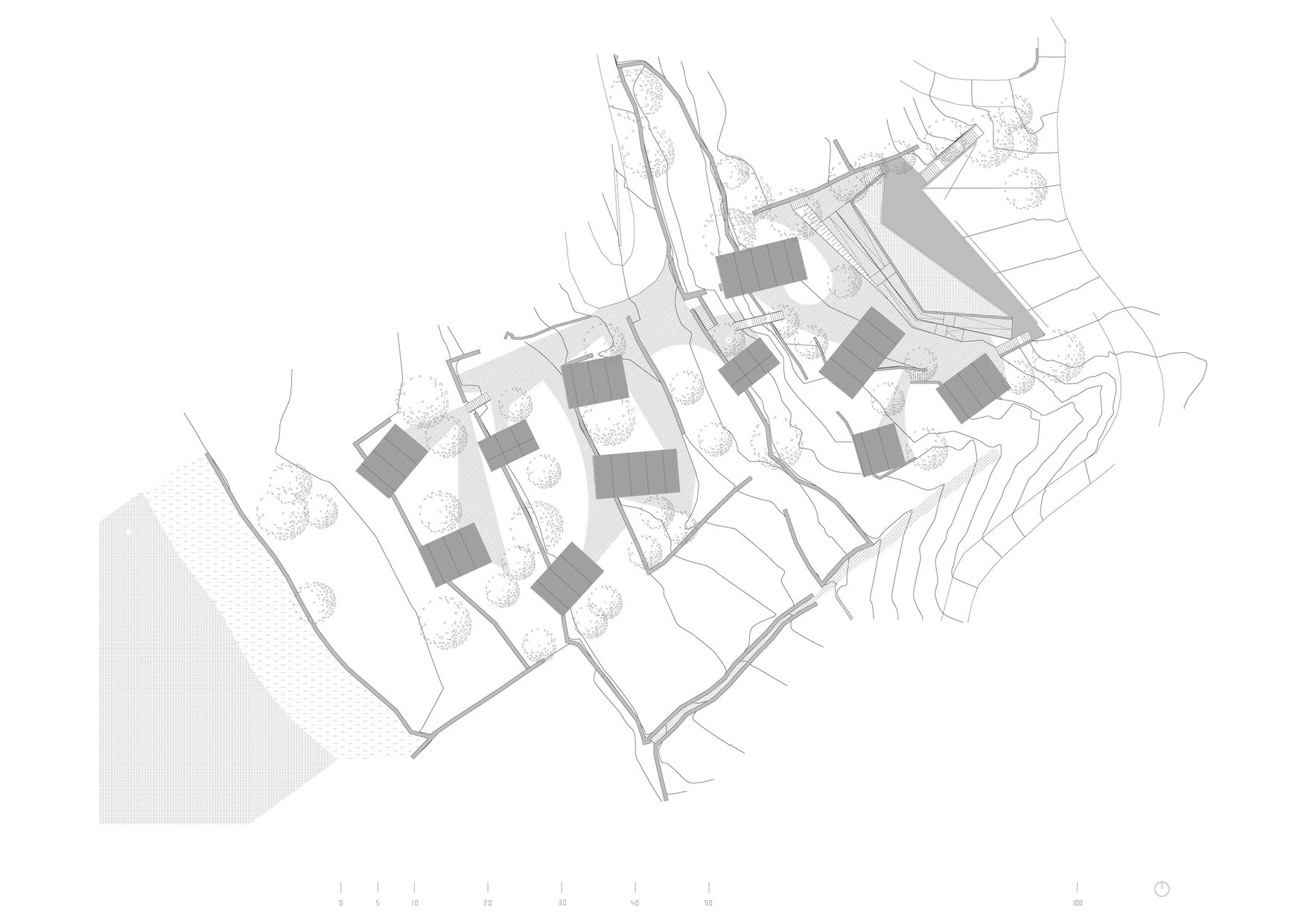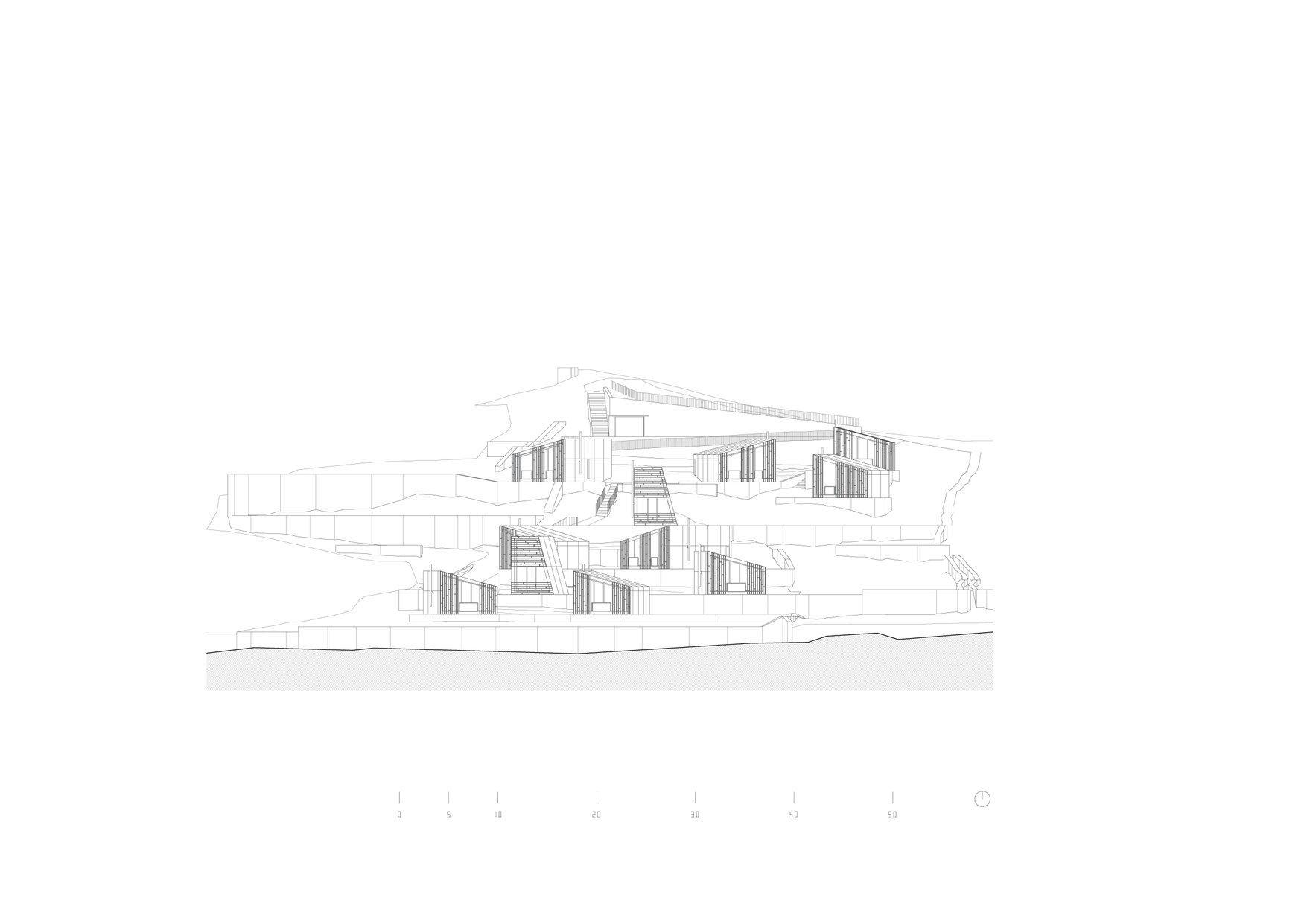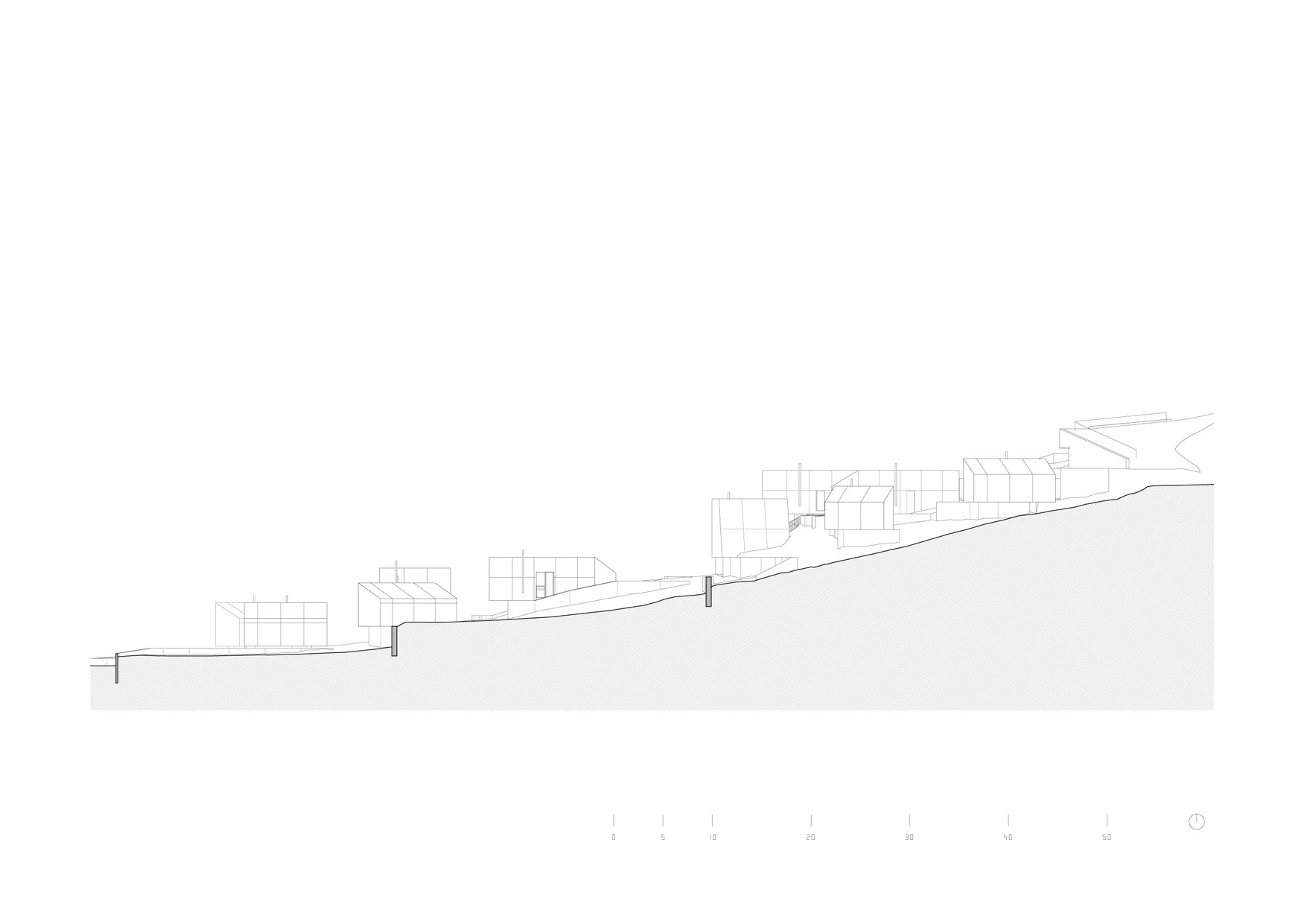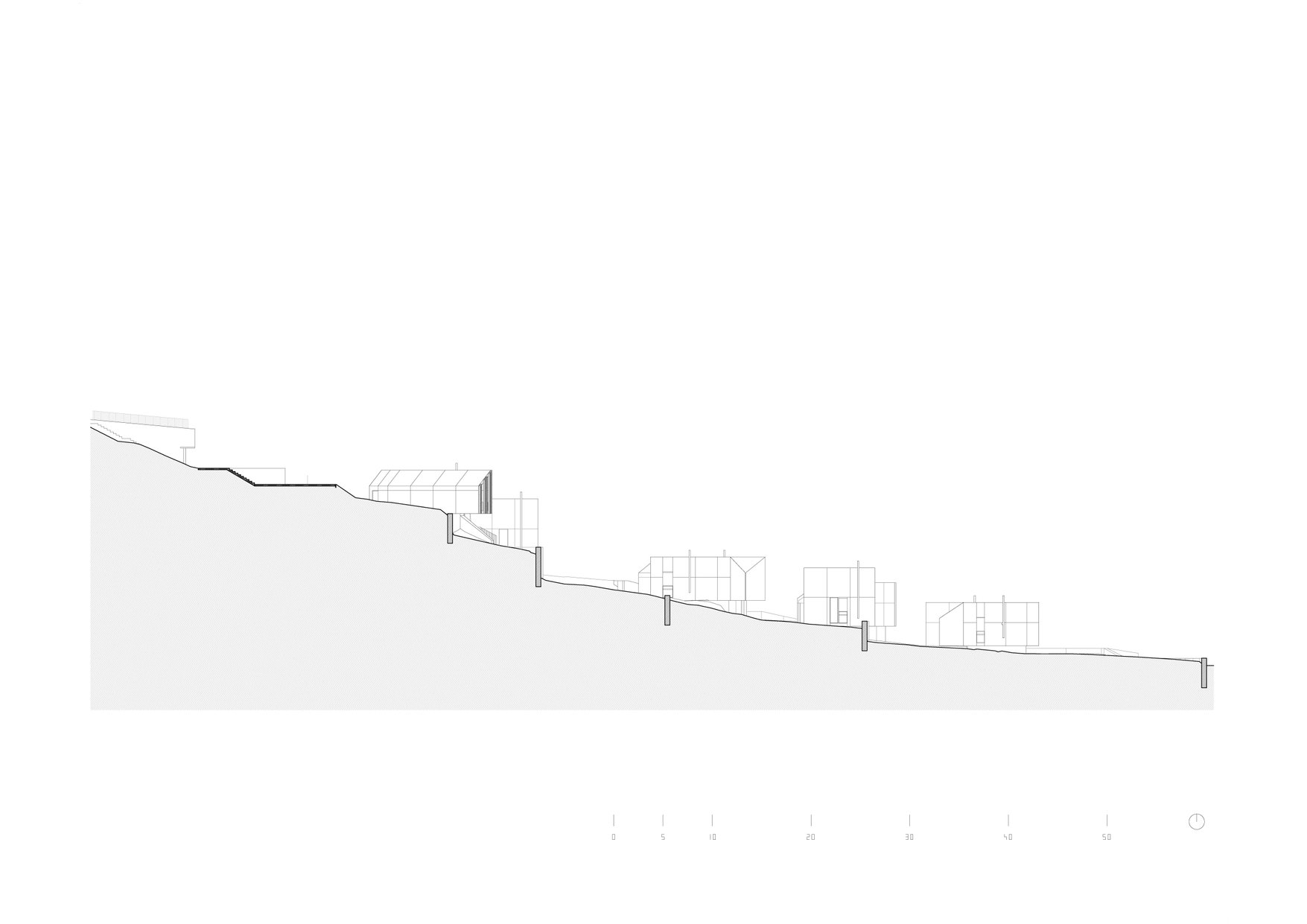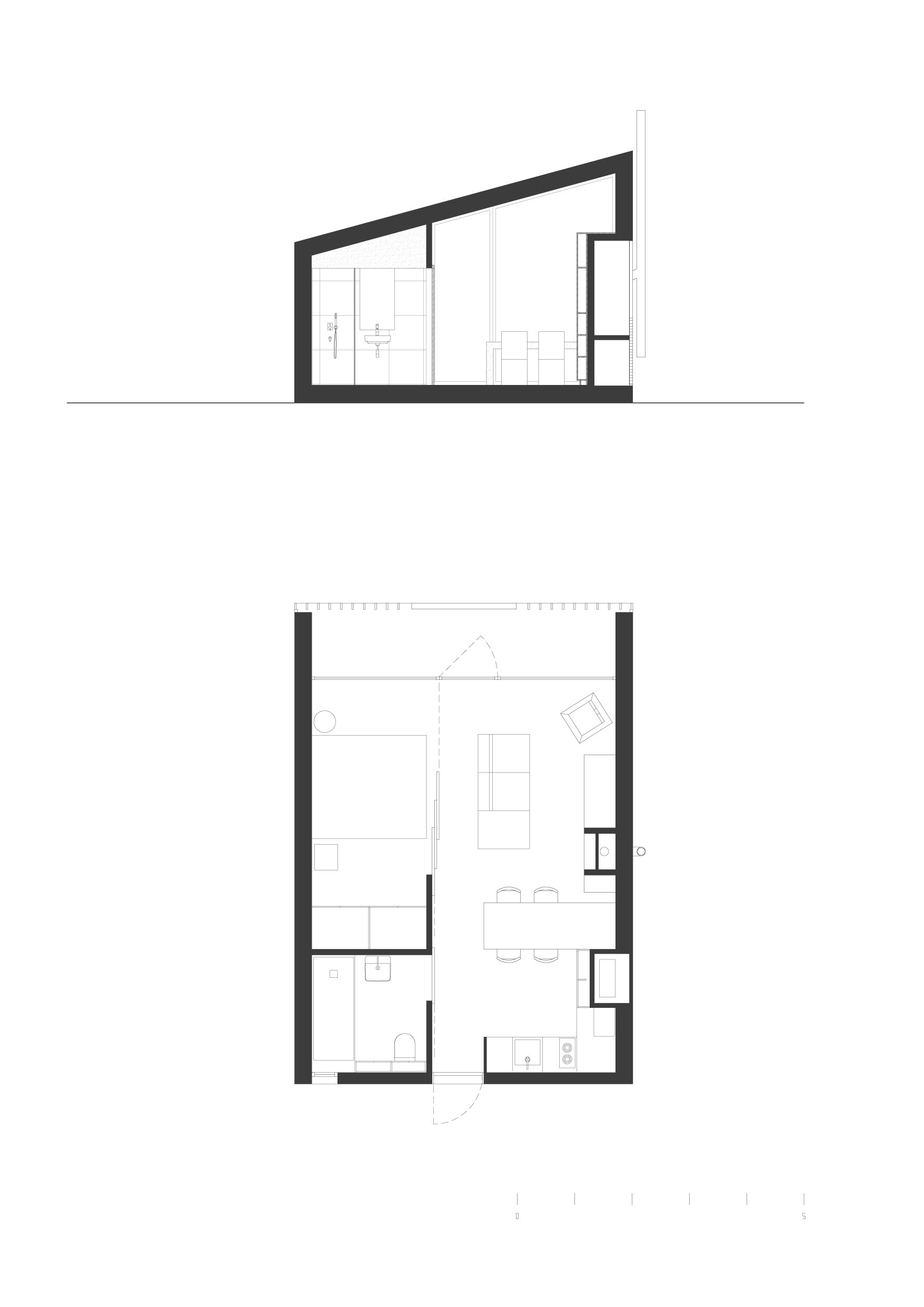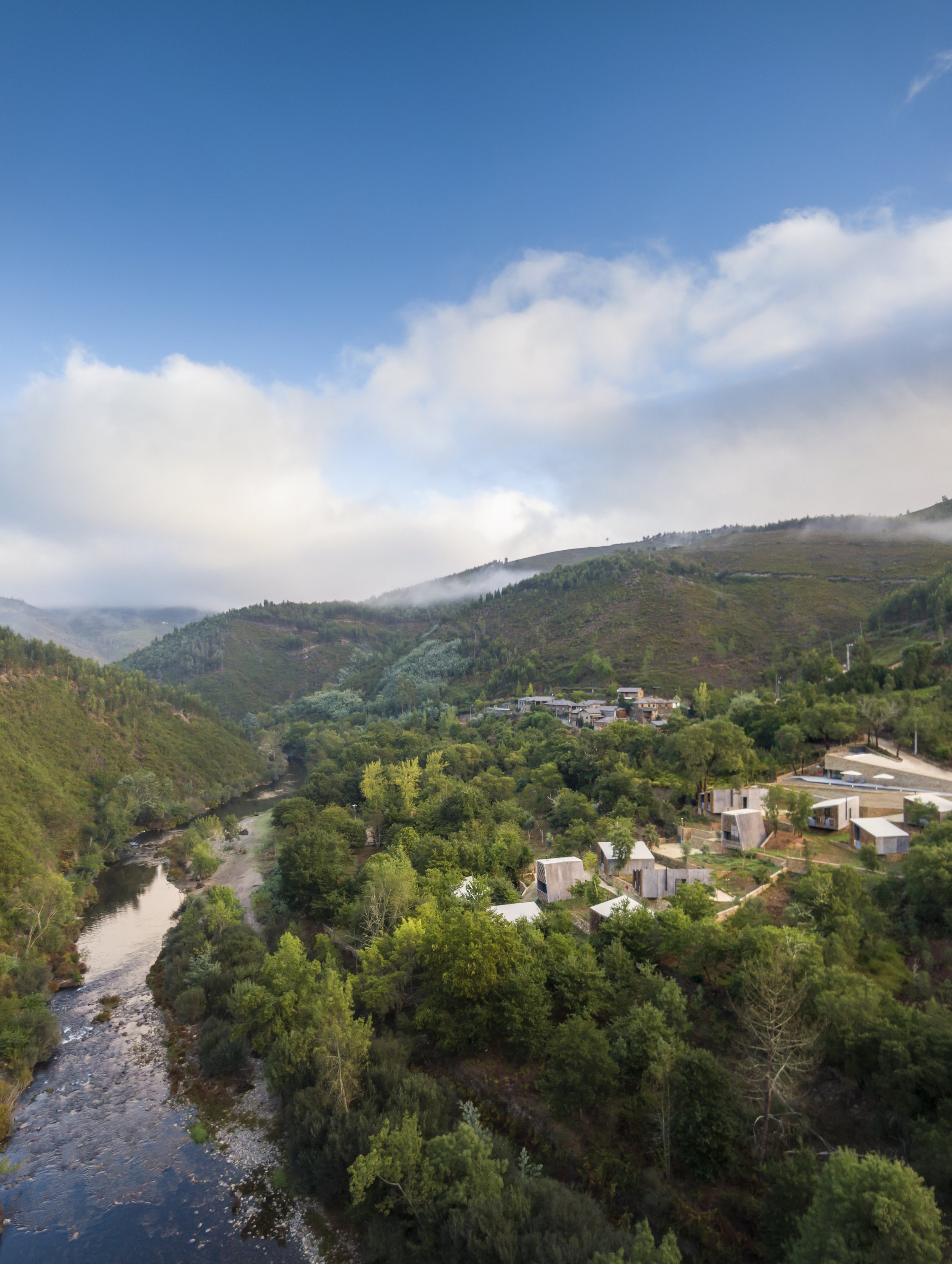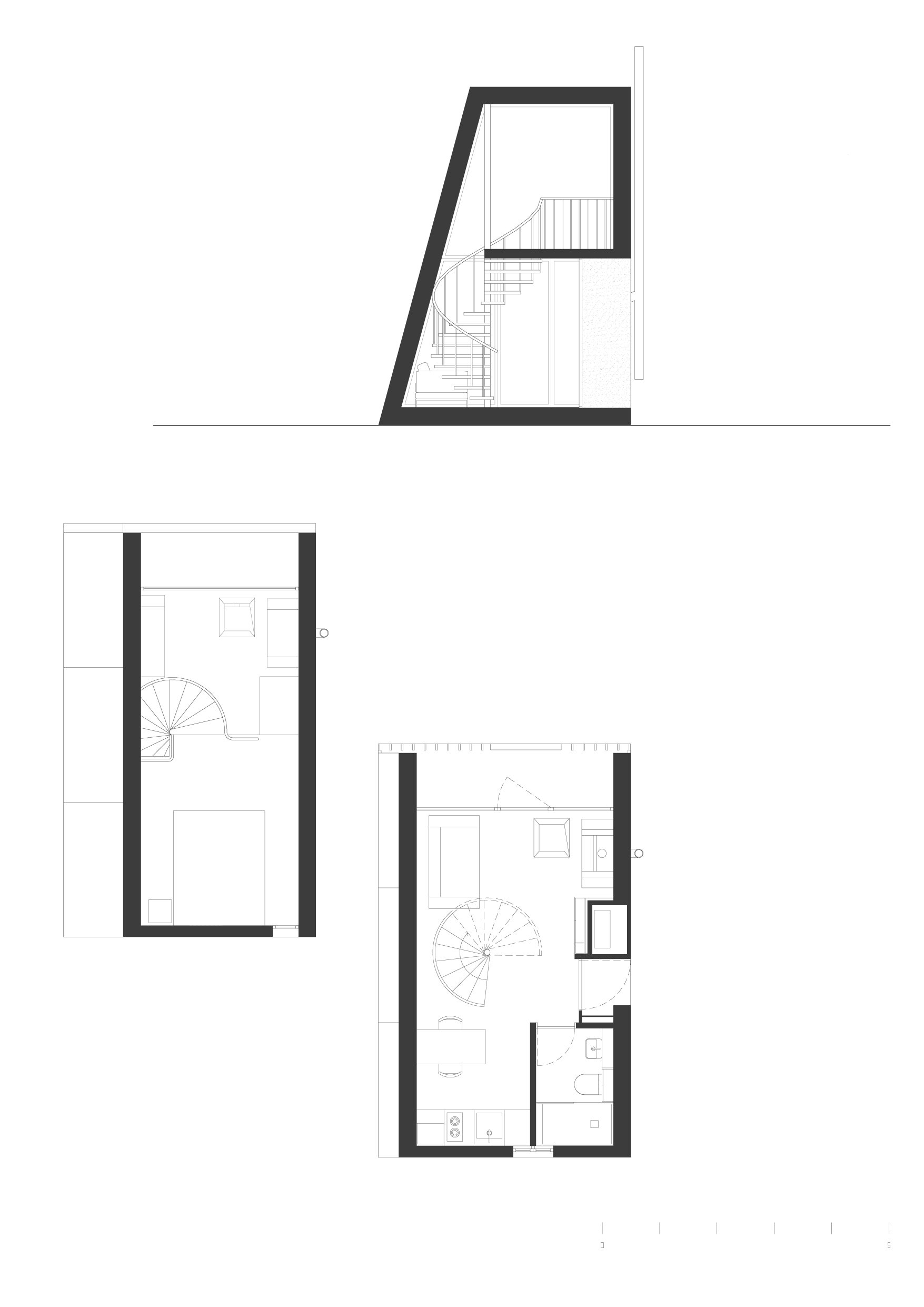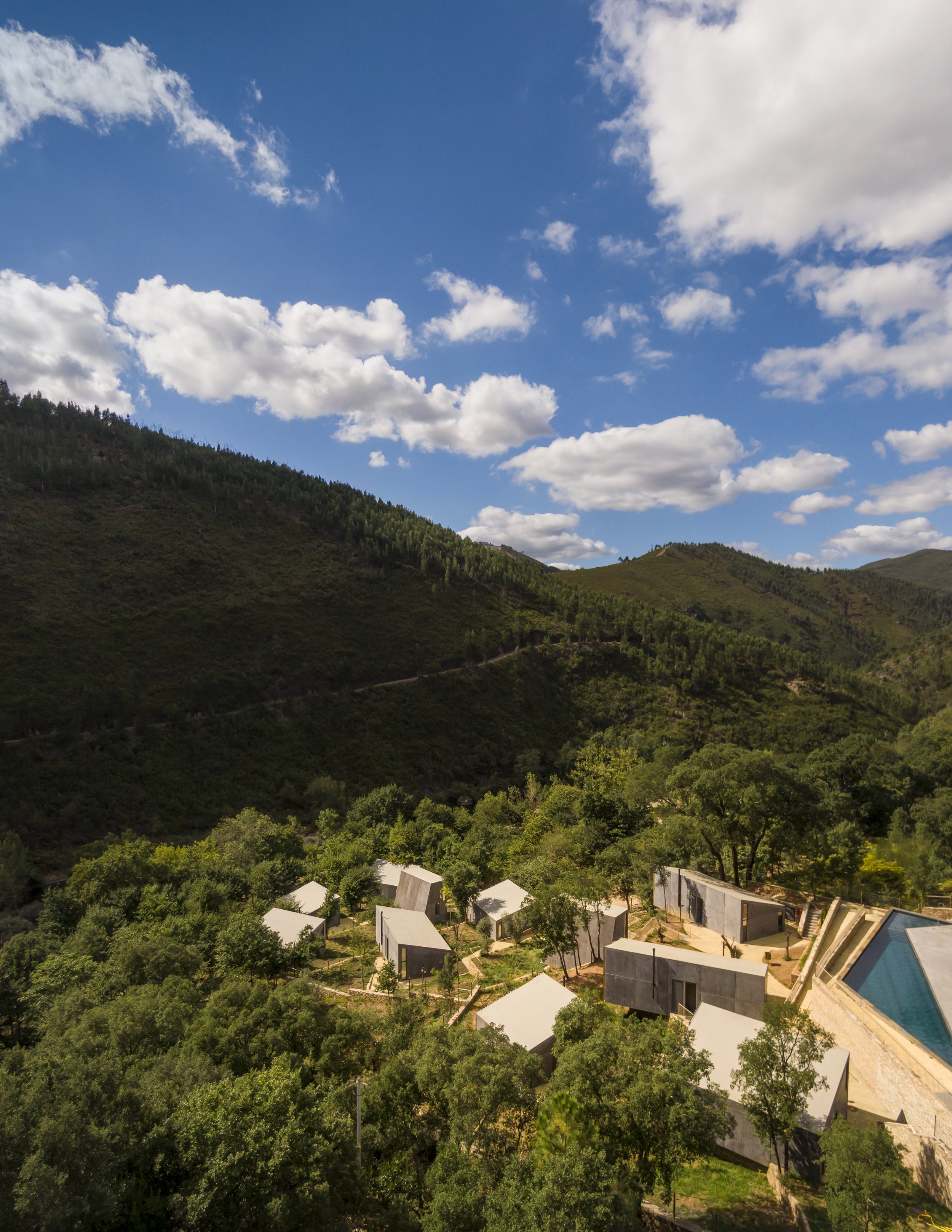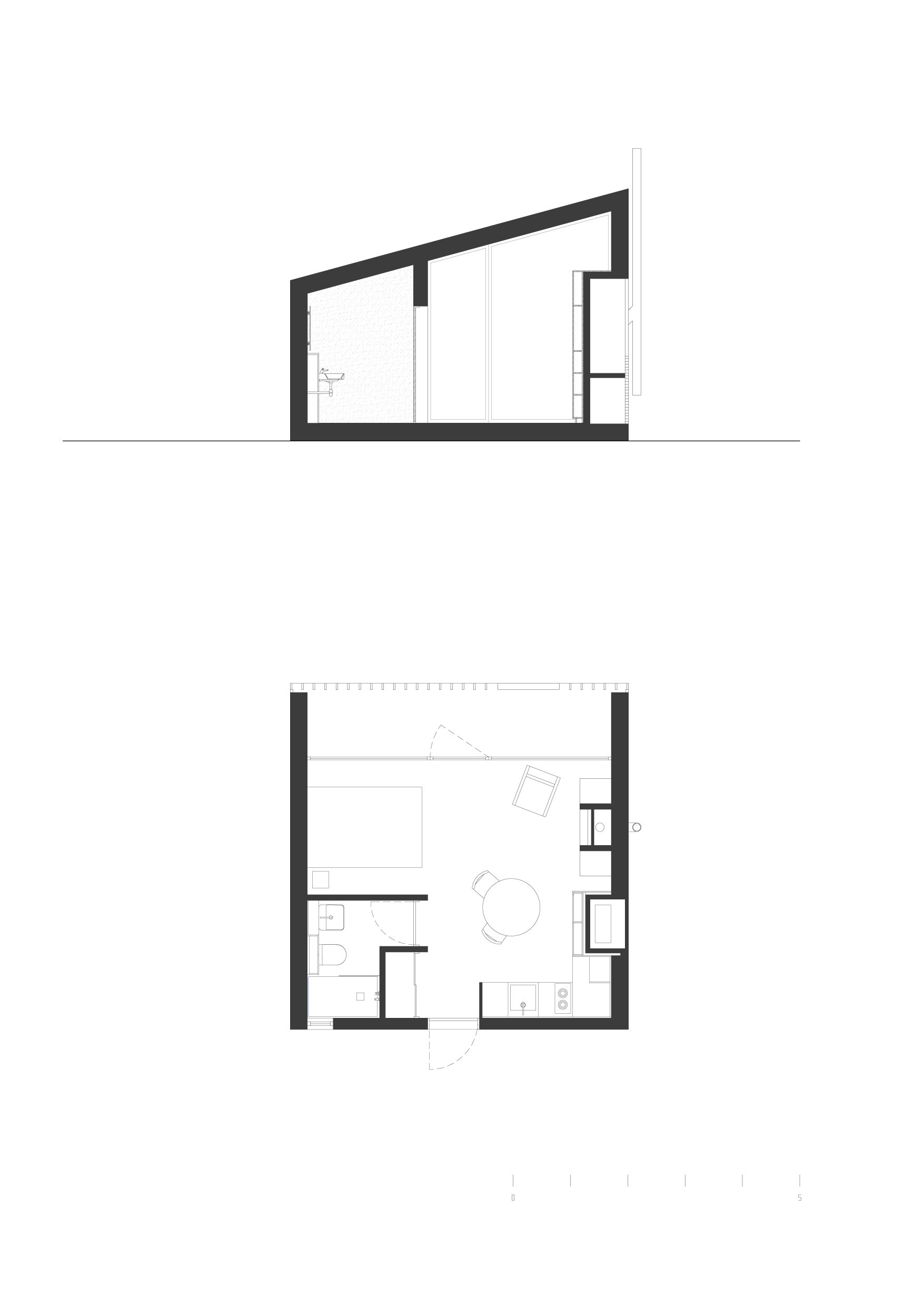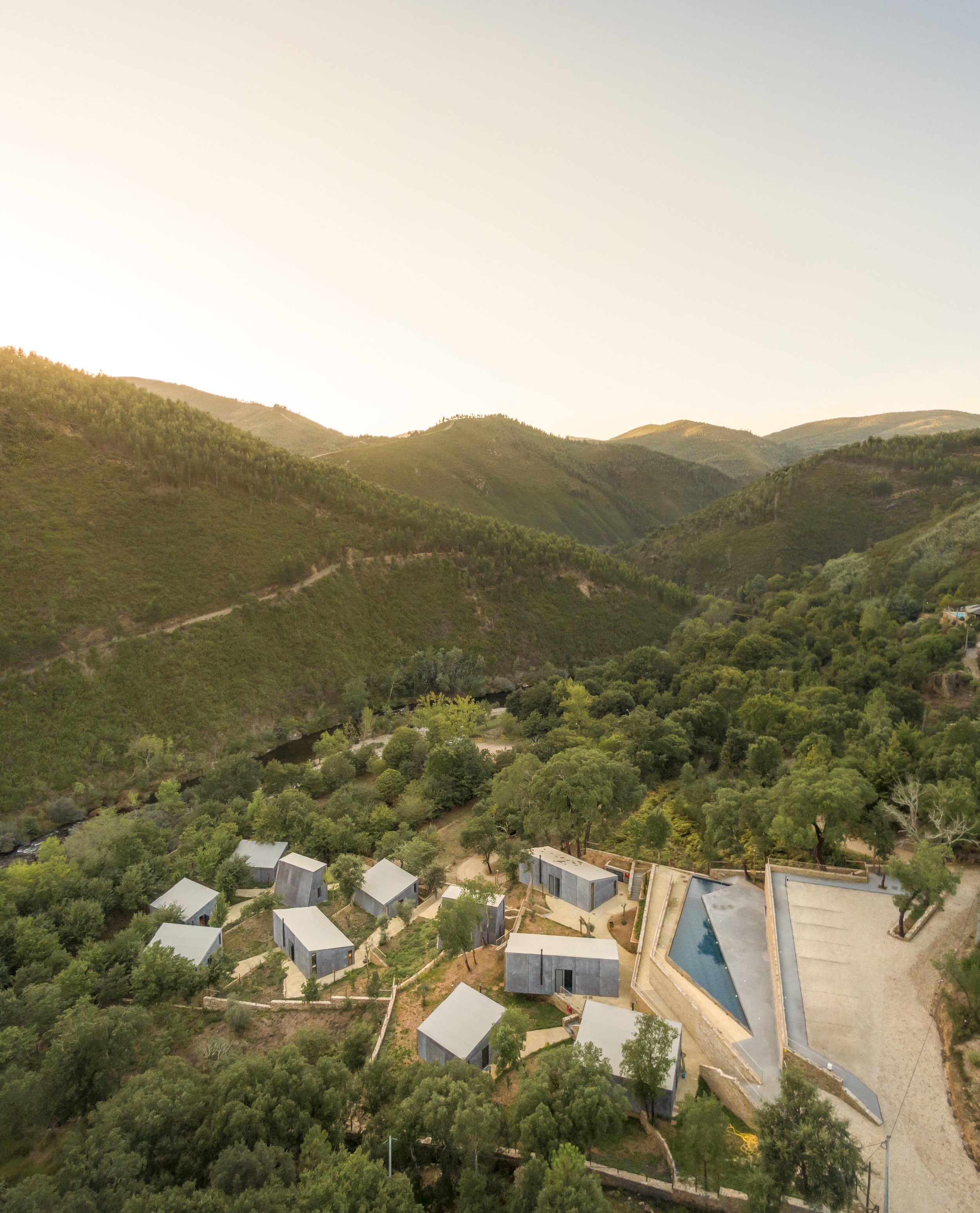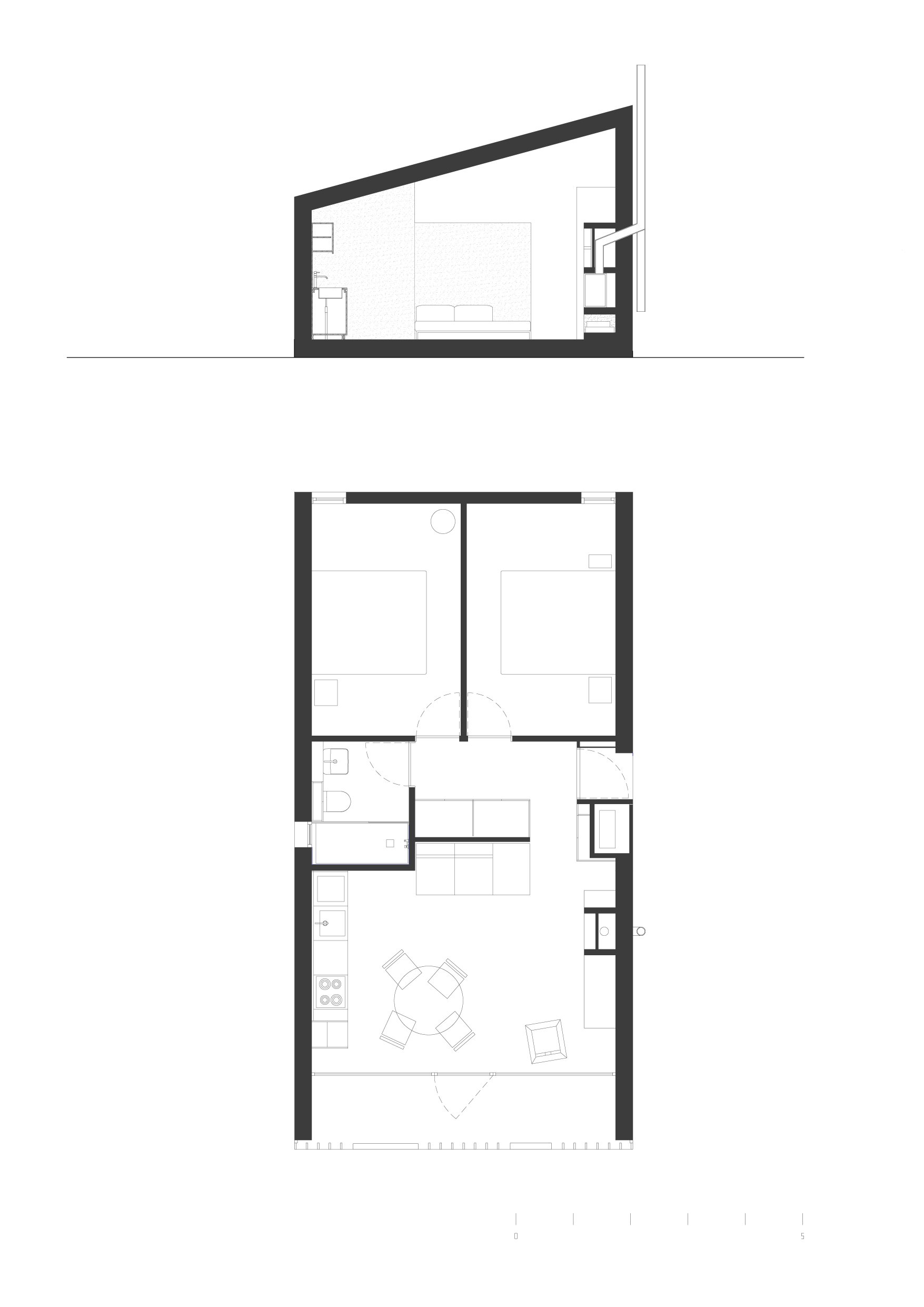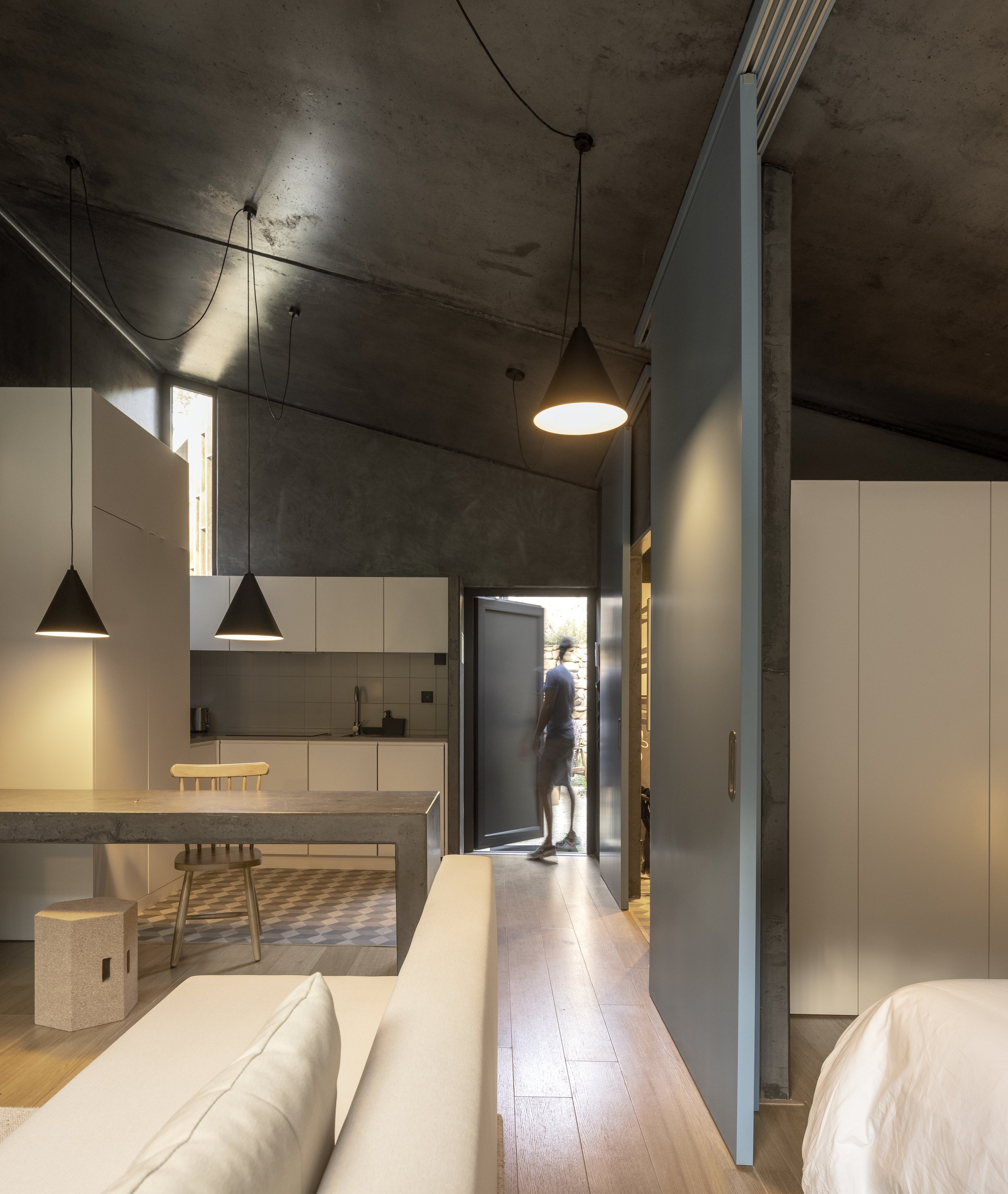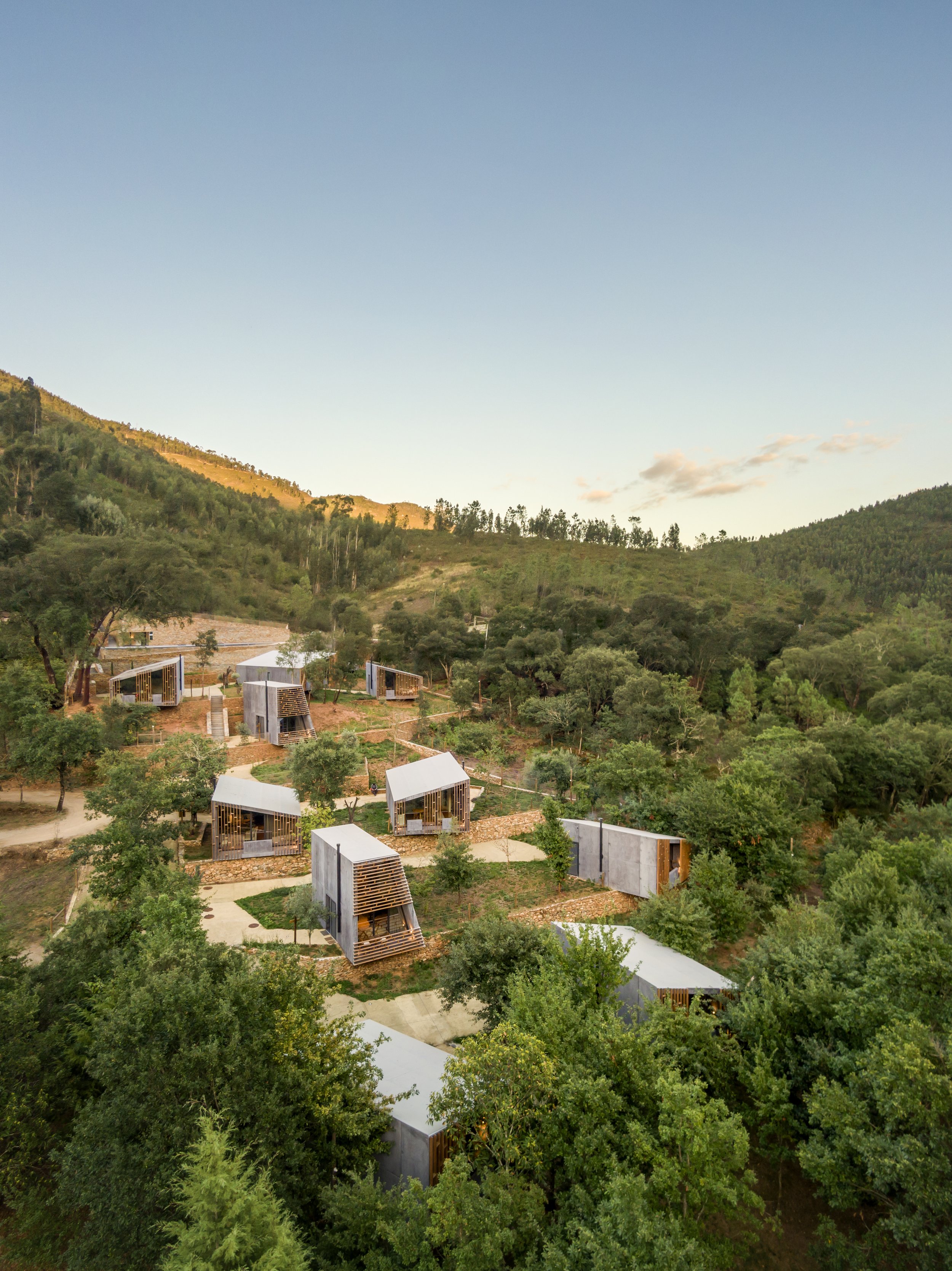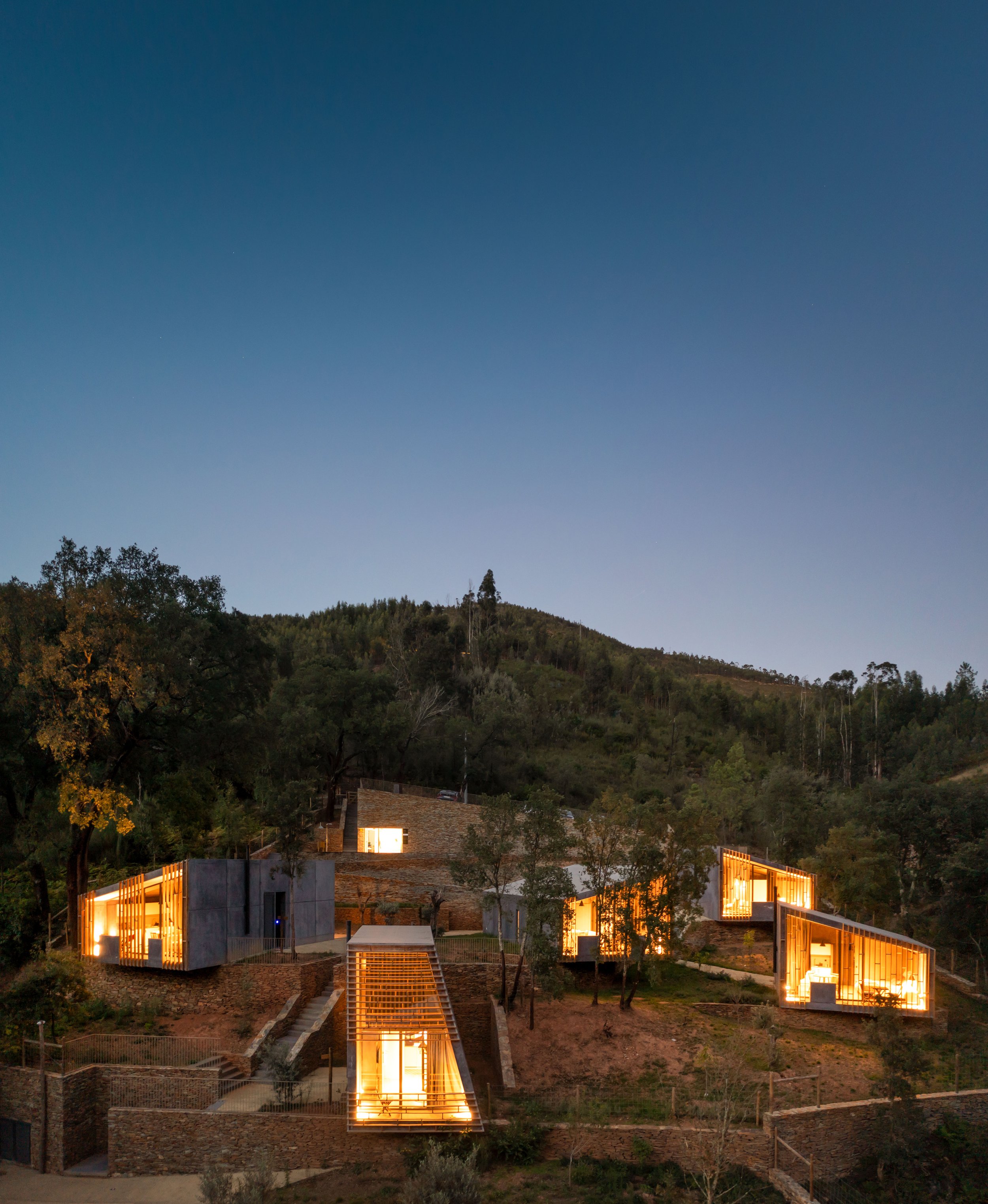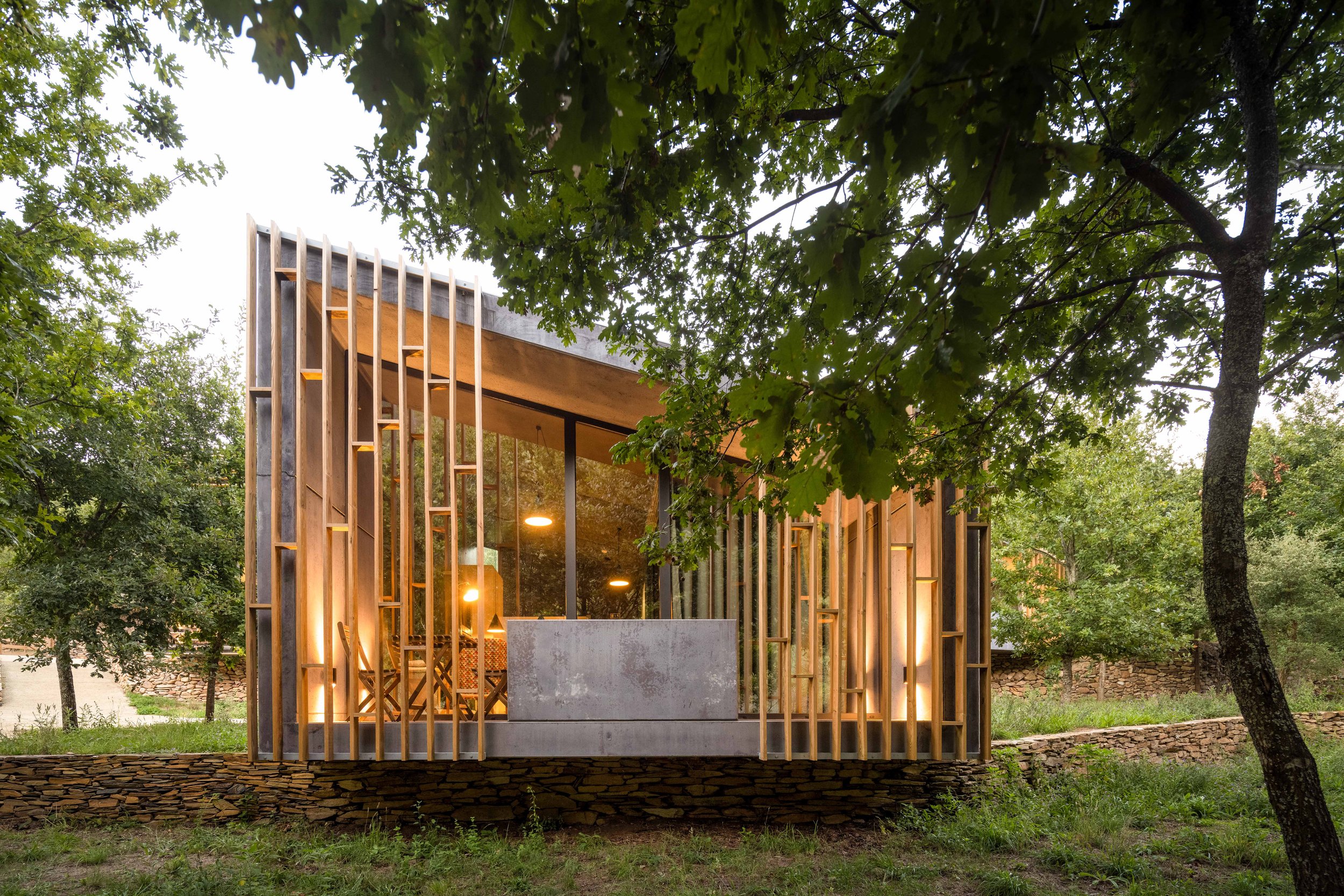Paradinha - 11 cabins in the woods / SUMMARY
Address
Aldeia da Paradinha, Alvarenga - Arouca
Program
Tourism, Hotel, Cabins, Tiny Houses
Status
Complete
Gross Built Area
512 m2 / sqm
Calendar
2017 January • Project beginning December 2018 - February 2021• Construction works
2021 • Completion
Team
SUMMARY
Photos & copyright
Fernando Guerra_FG+SG
Text description provided by the architects.
Considering the roughness and the remoteness of this plot it would be difficult (and extremely expensive) to assemble construction yards for a traditional building. Thus, in this case, resorting to prefabricated structures was not just a choice, but the only efficient option we had to simplify the building process within such conditions.
The initial commission was to distribute several touristic rooms over the terrain. However, we proposed small houses - not just rooms - so that some of them would be able to work as full-time houses rather than tourism units. Mixing these two different programs (tourism + housing) we ensure that this complex will not have a seasonal occupation, being inhabited during the whole year and not just in the vacation period. This multifunctional approach promotes the intensity of this complex’s occupation, therefore fostering its frequent maintenance and improving the security of the area.
This project was an opportunity to make new experiences within the Gomos building system: in each house, all the technical installations (water, electricity and climatization) were concentrated in just one module and extended to the other models externally. This procedure was standardly repeated in the whole project, accelerating its production/assembly process.
The project is composed of eleven small cabins, including four different typologies, from 28sqm to 58sqm. They are distributed across the plot according to the natural configuration of the terrain, altering it as little as possible. The old stone walls and the existing trees were preserved – the houses were carefully placed around them. Combining this apparently arbitrary positioning with different orientations allowed the houses not to block each other’s views. From the balconies, behind the wooden slats, we can see the forest and, in some cases, the river.






